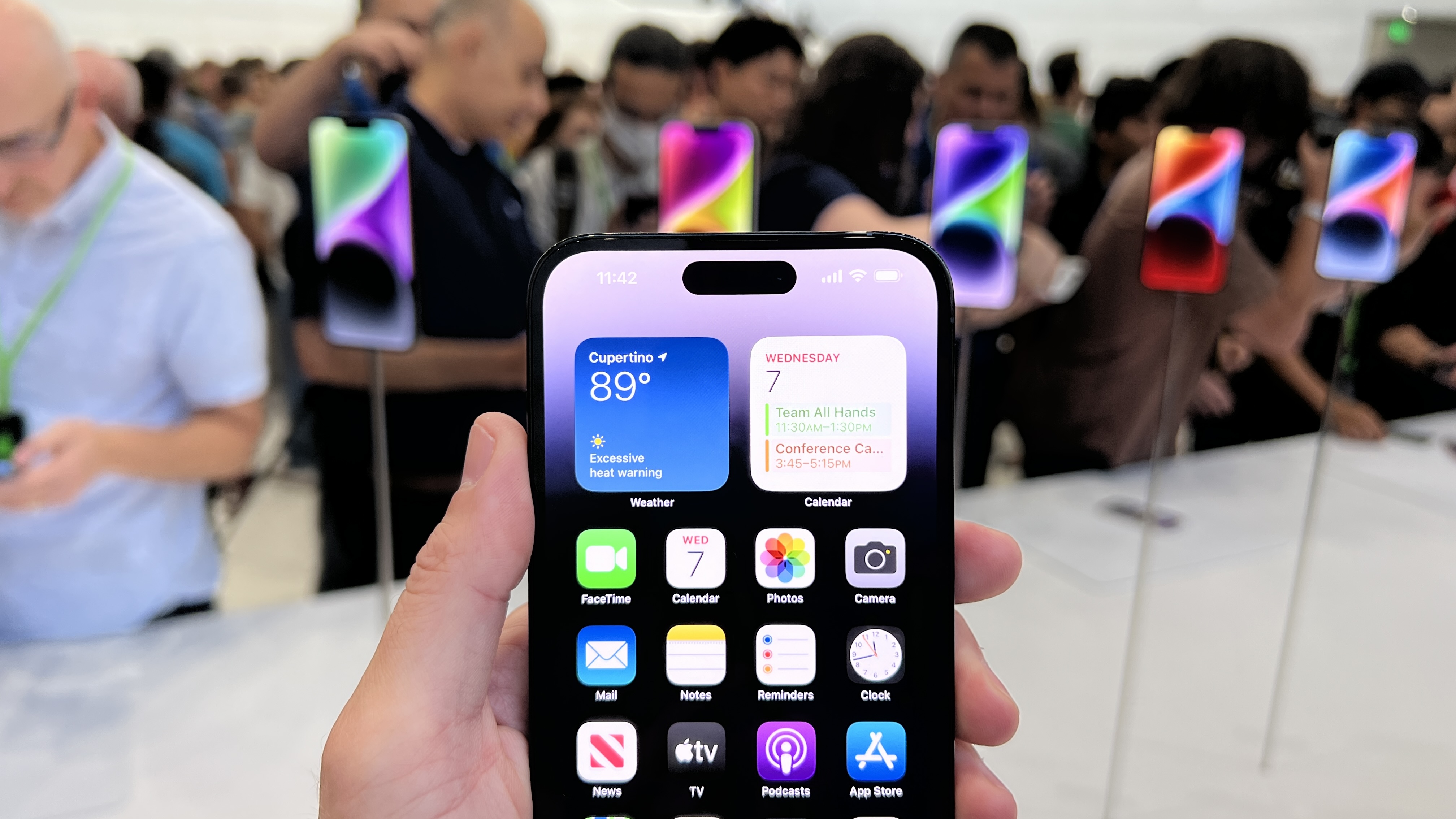I really hope this iPhone 15 rumor isn't true, you deserve better

Whether you consider it a gimmick or an innovation, the Dynamic Island is one of the tentpole upgrades for Apple's freshly-launched iPhone 14 series but I'd much rather Apple concentrate on a different aspect of the display experience; one that it sounds like it's going to continue to neglect with the iPhone 15.
I was reading colleague David Nield's news story on one of the first iPhone 15 display tech leaks; the promise of the Dynamic Island making its way to every model of next year's iPhone range, but the source who revealed this revelation had additional insight to offer on the screens destined for next year's devices and what he had to say really ticked me off.
Yes, Dynamic Island expected on standard models on the 15. Still not expecting 120Hz/LTPO on standard models as supply chain can’t support it.September 18, 2022
Understand that I'm not angry at Ross Young – CEO of Display Supply Chain Consultants ('DSCC' for short) and the source of the above tweet – but if what he says is to be believed, it maintains an established precedent that's already overstayed its welcome on the iPhone. It leads me to think that Apple doesn't respect its users enough to give them up-to-date technology at a fair price.
While the knowledge that the iPhone 15 line looks set to benefit from the Dynamic Island (currently exclusive to the iPhone 14 Pro and iPhone 14 Pro Max) is a good thing, the second part of the above tweet suggests one of the standard iPhone's long-standing display shortcomings – its refresh rate – isn't going to see an upgrade with next year's lineup.
Not very refreshing
2021's iPhone 13 Pro and iPhone 13 Pro Max introduced ProMotion to the iPhone, made even better with improved LTPO (the acronym which describes the process used to make the panels in question) displays gracing the iPhone 14 Pro and iPhone Pro Max. As such, the phones' screens boast an ultra-low power 1Hz refresh rate that for the first time on iPhone allows for always-on functionality; alongside a variable 10Hz to 120Hz refresh rate during normal operation that collectively helps with both power efficiency and user experience fluidity.
By comparison, the base iPhone 14 remains stuck with practically the same OLED panel used on the two previous generations of iPhone, which itself sports the same fixed 60Hz refresh rate that every iPhone (aside from the last two generations of Pros) has had since the series debut, way back in 2007.
It's one of the key differentiators that Apple now uses to set its Pro phones apart from the standard versions of each generation, but if you look outside the walled garden at the wider mobile market, regardless of price point, a fixed 60Hz just isn't good enough anymore.
Sign up for breaking news, reviews, opinion, top tech deals, and more.
There are scores of mid-range and budget Android alternatives that have offered displays with refresh rates of 90Hz and beyond for far less and for far longer than the last two generations of Pro iPhone. As such, if Young's promise of refresh rate exclusivity for the Pro models persists in 2023, it'll render what could already be considered one of the base iPhone's biggest weaknesses even more of a failing.
All that power and nowhere to go
I, like many, was hoping for at least some degree of flex with the iPhone 14's display. Apple could have used an adaptive 60Hz panel, for greater power efficiency (potentially allowing for iOS 16's always-on lock screens too) or pushed the boat out and given users a 90Hz panel; meaning there was still a clear upgrade path to the Pro models' smoother 120Hz screens. This obviously wasn't to be.
One thing iPhones always have in spades is power – thanks to Apple's outstanding Bionic chipsets, but for mobile gamers, despite packing one of the best pieces of smartphone silicon in the business, the standard iPhone 14 is a bad gaming phone and the blame falls squarely on its display.
Even though iPhones have sported a 120Hz touch response rate (the frequency at which a phone registers touch input from a user) for a few generations now, viewing content at 60Hz – especially when it comes to competitive mobile games – is just too slow; both for relaying user inputs and tracking moving threats or goals on-screen. You won't see a single entry in our rundown of the best gaming phones in possession of a display with a refresh rate below 120Hz.
The same can be said for streaming video too, thanks to both the ProMotion-toting Pro iPhones and the longer-serving run of high refresh rate-capable Android phones. It's not just games that are capitalizing on these smoother screens, platforms like YouTube are starting to offer more and more content above 60fps; a trend and content pool that's only going to continue to grow as time goes on.
To watch that natively, you need a panel that's fast enough and for the price, Apple is asking customers to pay (the iPhone 14 starts at $799 / £849 / AU$1,339), they should be getting a phone that's more than equipped to handle such content without question.

Alex joined as TechRadar's Senior Phones Editor in June 2022, but brings over a decade's worth of experience to the role, with an expertise in smartphones, tablets and wearables. He's covered keynotes hosted by the biggest brands and attended the launches for some of the most influential mobile products of the last few years. His experience was amassed at some of the most reputable consumer technology publications out there, including GSMArena, TechAdvisor and Trusted Reviews.